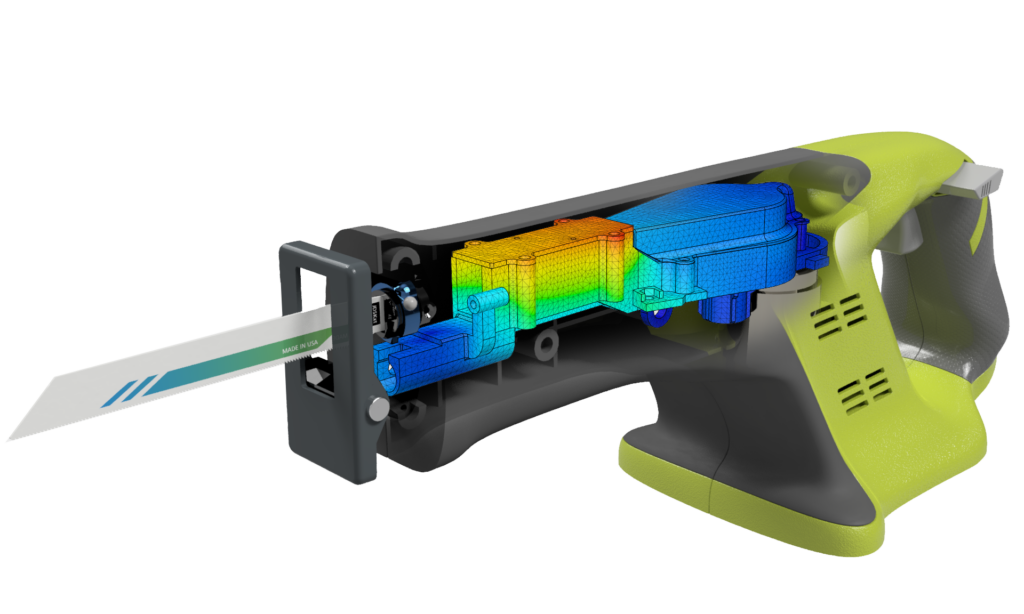& Construction

Integrated BIM tools, including Revit, AutoCAD, and Civil 3D
& Manufacturing

Professional CAD/CAM tools built on Inventor and AutoCAD
3 min read
Modal analysis is an important tool in design and manufacturing processes, ensuring product reliability, performance, safety, and cost-effectiveness. Read on to learn more about what it is, its benefits, and how Autodesk solutions can help.

Modal analysis is a method used in engineering to study and characterize the dynamic behavior of structures and mechanical systems. It involves determining the natural frequencies, mode shapes, and damping characteristics of a structure. These are important for determining how structures will respond to various dynamic loads and vibrational forces. By analyzing these parameters, engineers can predict the vibrational behavior of a structure, identify potential issues, and optimize designs for better performance and reliability.
Modal analysis offers significant benefits to engineers for serval reasons, including, but not limited to:
Modal analysis is applied to aircraft wings, fuselage, and other structural components to predict their response to aerodynamic loads, turbulence, and engine vibrations. This ultimately ensures structural integrity and passenger safety.
Engineers use modal analysis on vehicle bodies and engine components to understand and optimize their response to various vibrations and forces, ensuring quieter, more comfortable, and durable vehicles.
Study the vibrational behavior of industrial machinery to prevent resonance, improve performance, ensure durability, and enhance user comfort.
Ensure the reliable performance of prosthetic limbs and medical implants under physiological loads. In addition, ensure the proper operation of medical diagnostic equipment like MRI machines and CT scanners.
Selecting the right software solution is important for achieving accurate and reliable results. Key factors to consider include accuracy and precision. The tool should provide high accuracy in calculating natural frequencies, mode shapes, and damping characteristics to ensure that the analysis closely mirrors real-world behavior. A user-friendly interface and intuitive workflow help to reduce the learning curve and improve productivity, so look for software with clear documentation, tutorials, and support resources. Scalability is another key factor to consider; the software should be able to handle different complexity levels, from simple components to large assemblies, ensuring it can grow with your needs. Finally, access to technical support, forums, and a vibrant user community can be invaluable for troubleshooting and advice.
Autodesk Inventor and Autodesk Fusion are great tools for running modal analysis studies. Either solution can help you to review a list of natural frequencies of your design, and it will also display the mode shape for each frequency value. In other words, you can display the animation to review the model behavior. Based on your results, you may decide to add mass to particular areas of your design to increase stiffness. Many of us would like to reduce the weight of our designs, but that is when the natural frequency of your geometry becomes a challenge. After changing your geometry, you can simply run the modal analysis study again with one button click. Then review the results to see if your design has shown improvement.
Modal analysis is a critical tool in engineering and design. It provides valuable insights into the dynamic behavior of structures and mechanical systems. By improving safety, performance, and reliability, and reducing costs and noise, modal analysis aids in the development of robust and efficient products and structures. As technology advances, the importance and applications of modal analysis are likely to expand, further solidifying its role in modern engineering.
May we collect and use your data?
Learn more about the Third Party Services we use and our Privacy Statement.May we collect and use your data to tailor your experience?
Explore the benefits of a customized experience by managing your privacy settings for this site or visit our Privacy Statement to learn more about your options.